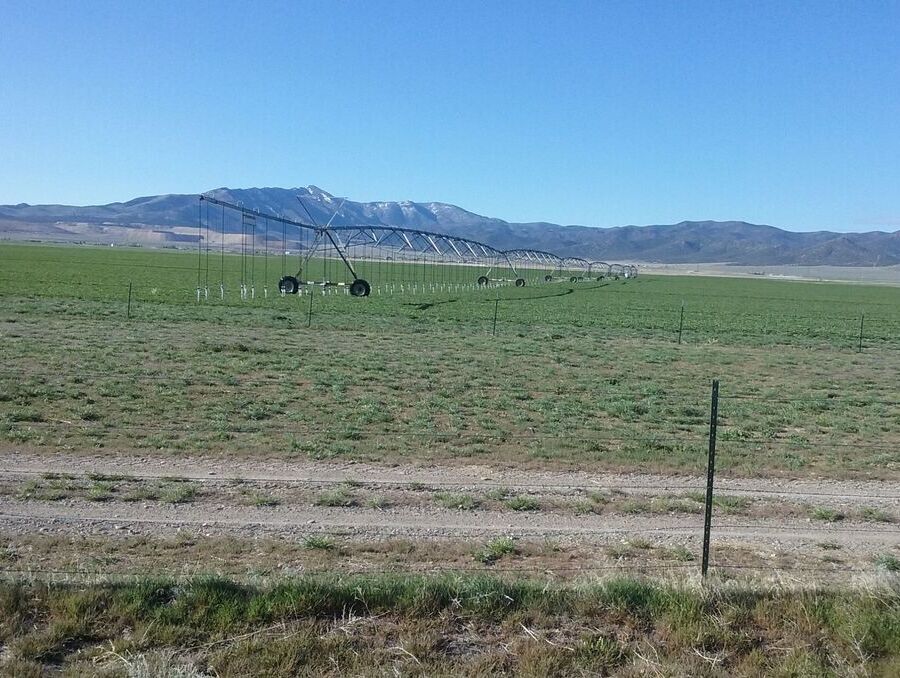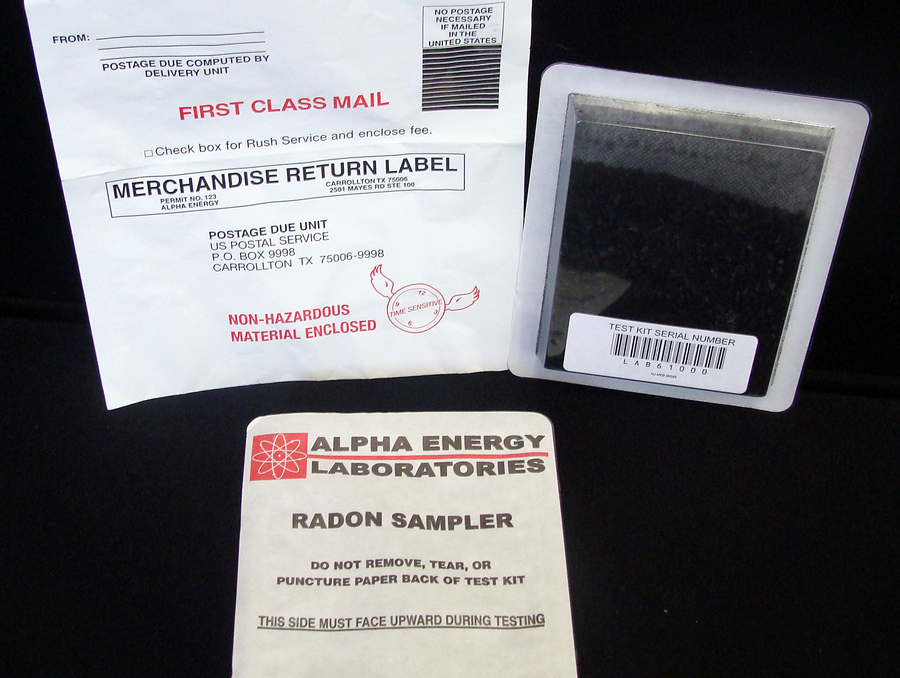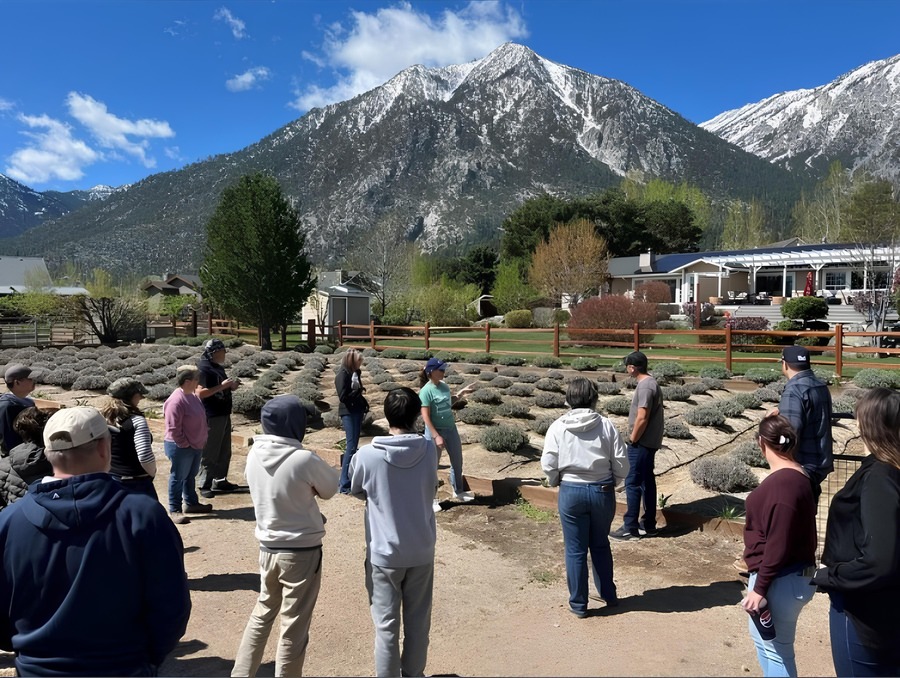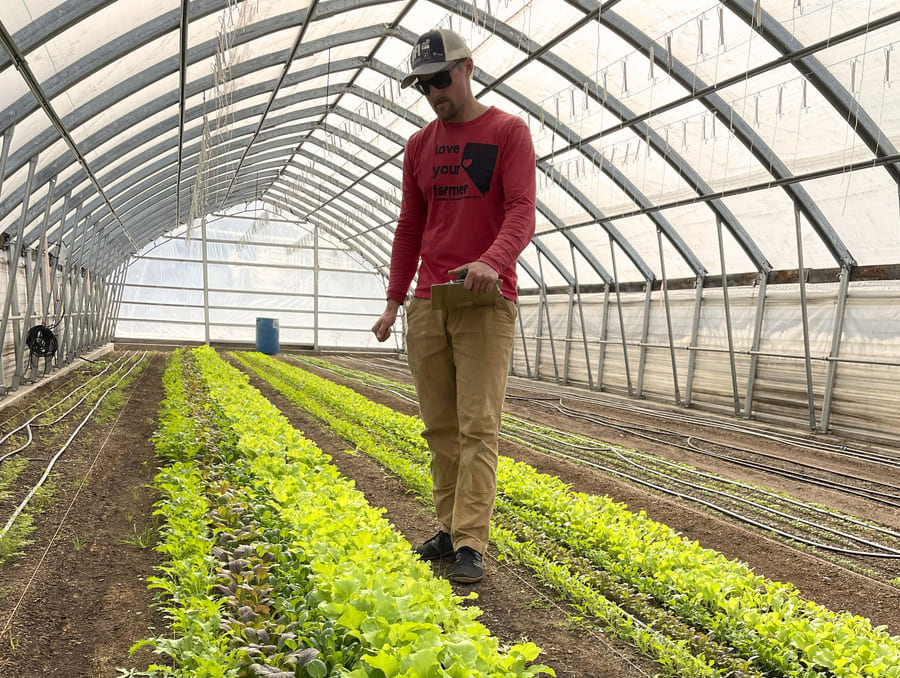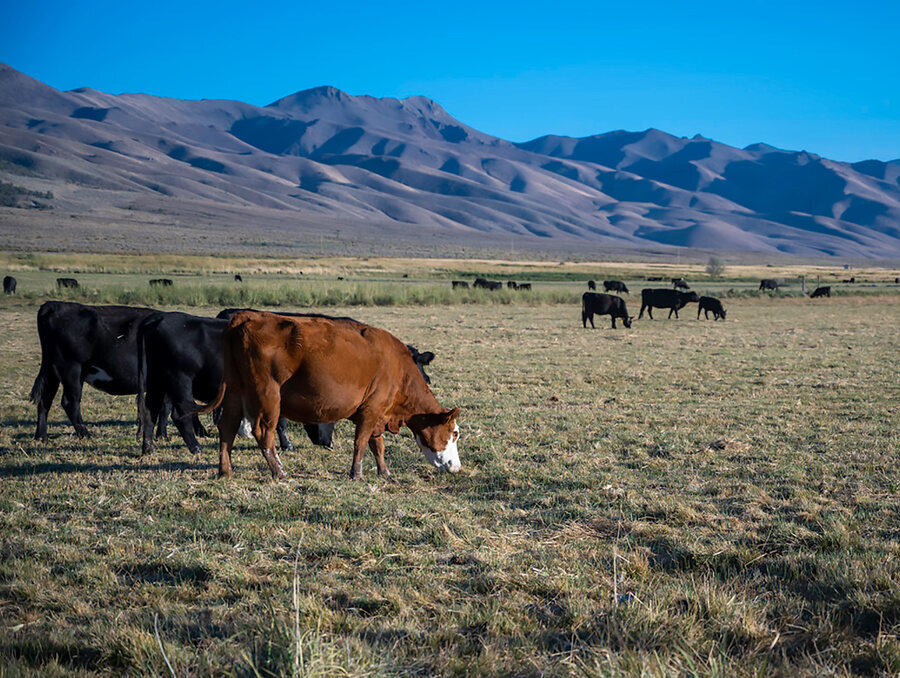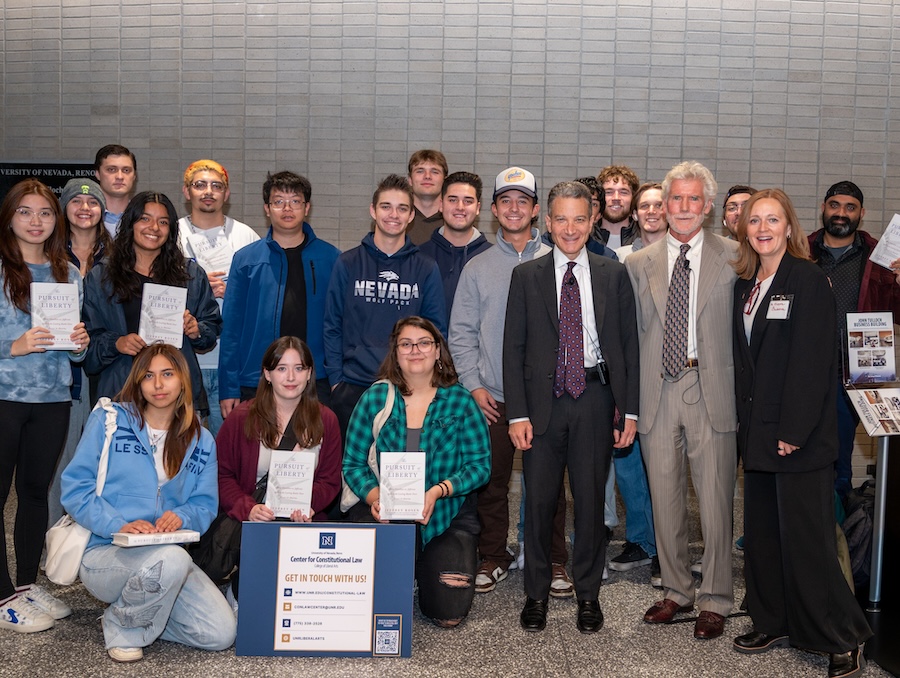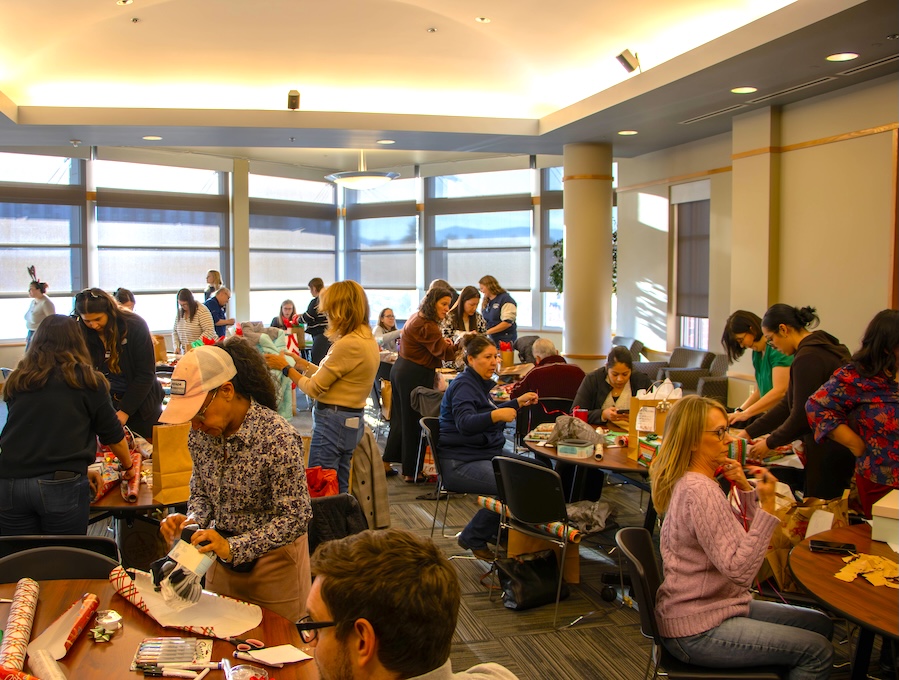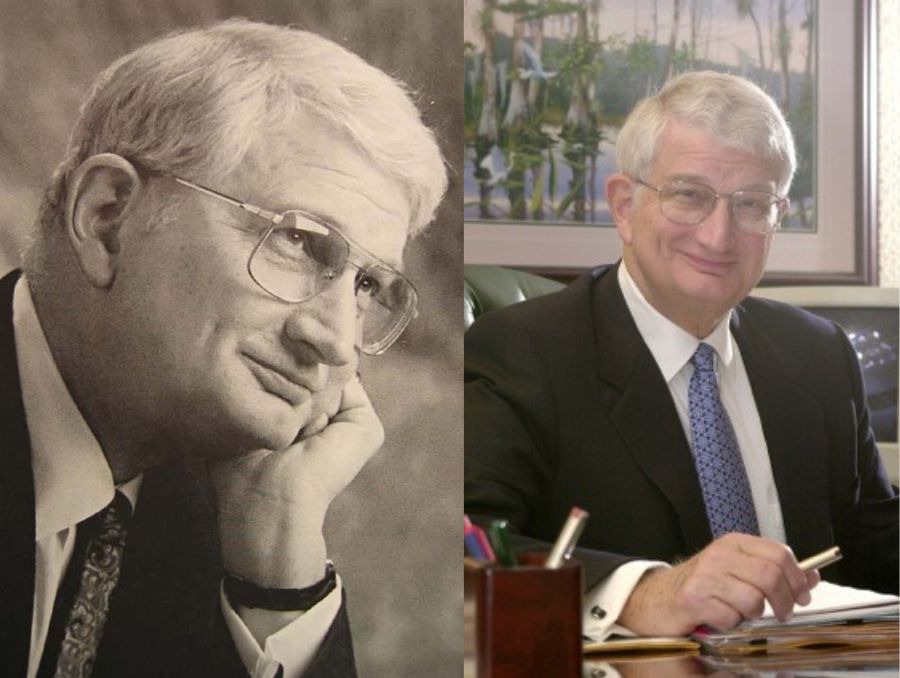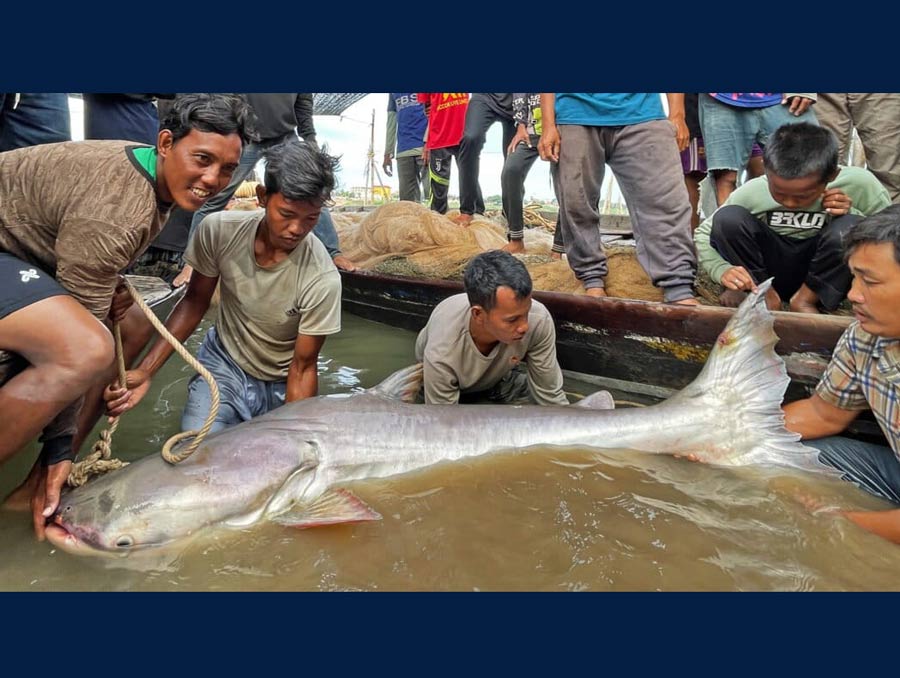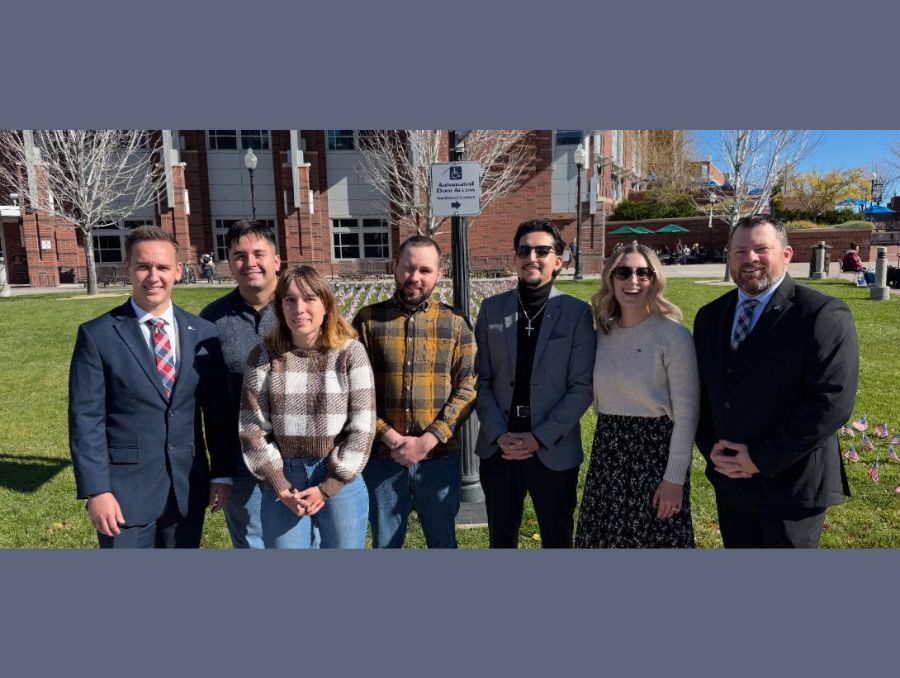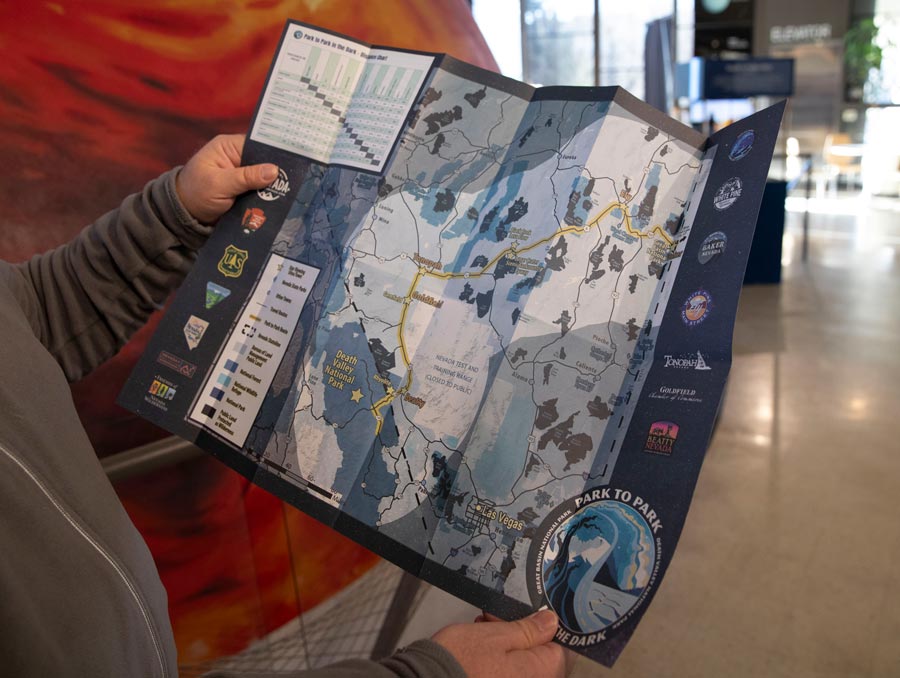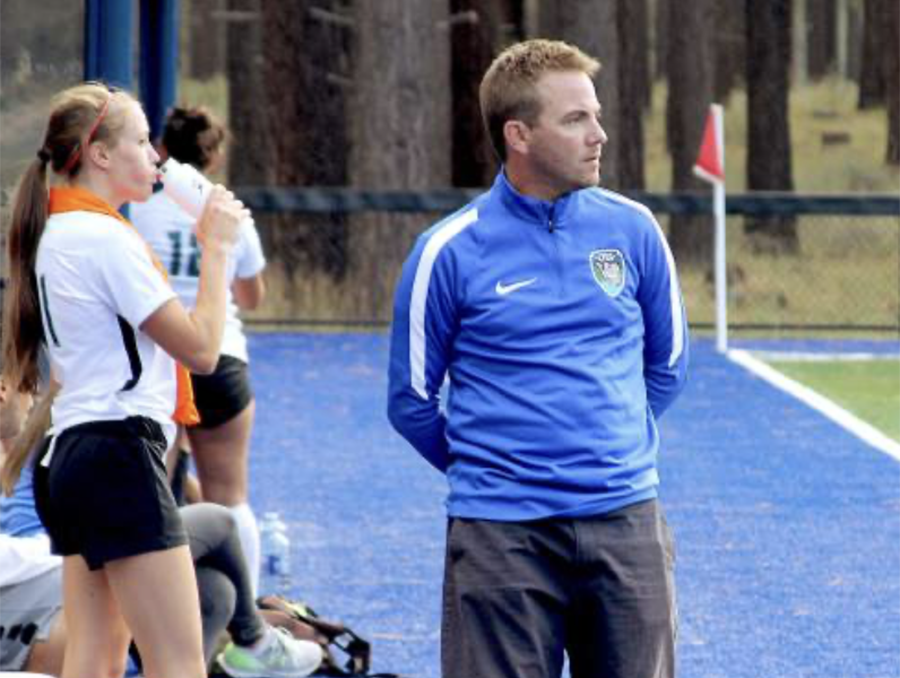A doctoral student and his professor at the University of Nevada, Reno spend long hours at their computers, using highly sophisticated satellite data to create a map of the underground water resources in Nevada, as part of the University’s Experiment Station research.
In the Diamond Valley of central Nevada, meanwhile, a specialist with the University’s Extension unit supports alfalfa farmers with new practices that use less water while still producing abundant crops.
And outside a modest office building in the heart of Reno, professional landscapers pay close attention as they master the techniques of water-smart residential irrigation in a workshop also overseen by Extension.
It’s all part of efforts by researchers, students and outreach specialists with the University’s College of Agriculture, Biotechnology & Natural Resources to help the driest state in the nation – a state that continues to feel the effects of a shifting climate – by focusing on the discovery and implementation of practices that ensure the best-possible uses of Nevada’s limited water resources.
Mapping hidden water resources
A fundamental question – how much water is available in Nevada’s underground aquifers? – may find answers through advanced analysis undertaken by Robert Washington-Allen, an associate professor in the College’s Department of Agriculture, Veterinary & Rangeland Sciences.
To map water resources hidden away hundreds of feet below the surface, Washington-Allen and doctoral student Weylin Gilbert use NASA’s Gravity Recovery and Climate Experiment (GRACE) satellites that track tiny changes in the Earth’s gravity field due to changes in the Earth’s mass.

“We can detect changes in the mass of an aquifer using GRACE and translate these into changes in the height of the water column with an accuracy of 1 centimeter,” Washington-Allen said.
Gilbert is now combining the satellite data with historical information from private and public wells in the state as he seeks to generate maps of underground water resources in the state.
“Nevada is a difficult study area for this type of project because the geology is very complex,” Gilbert said. “But, since water is so scarce here, it’s one where this work should be useful. And even when I invest time applying some modeling technique that doesn’t seem to make any progress, I’ve still explored something that might be effective in a different study area. One thing I love about scientific research is that there are few true dead ends. Sometimes you’re just learning about something different than what you expected to learn about.”
The work, part of an initiative known as NevadaView, is more than an academic exercise, said Washington-Allen.
“Drylands by definition are water-limited ecosystems,” he said. “Groundwater is a renewable resource, but because extraction has exceeded recharge in many places in the West and around the world, this resource is in decline.”
Continued research, Washington-Allen said, may provide even more detailed mapping of water resources and focus on how quickly aquifers are declining.
Using agriculture water precisely
Very precise use of irrigation water – enough generate maximum crop yields under a limited water budget, but not a drop more – on the most important crop in Nevada is the goal of research led by Alejandro Andrade-Rodriguez, assistant professor of water and irrigation management, also in the College’s Department of Agriculture, Veterinary & Rangeland Sciences.

Researchers led by Andrade-Rodriguez test combinations of several technologies and irrigation schedules on alfalfa crops grown at the University’s Valley Road Field Laboratory, part of the College’s Experiment Station. Their goal: determining which combination delivers the highest yields with restricted water use and creating tools that allow farmers to put that knowledge to use.
It’s a critically important issue in Nevada, Andrade-Rodriguez said, because alfalfa is the state’s leading cash crop but requires substantial irrigation. Farmers are under increasing pressure to reduce their water use as the result of the depletion of groundwater reservoirs, increased water demands from a growing population and the effects of a shifting climate.
The research at the Valley Road Field Lab relies on several types of sensors to monitor soil moisture in different parts of a field, as well as infrared thermometers installed above the plants to estimate the amount of moisture they lose. The research so far indicates that carefully targeted irrigation strategies can reduce alfalfa water consumption by 20% while causing only a 5% reduction in seasonal dry yield. A further reduction of 40% in alfalfa water consumption results in only a 14% percent reduction in seasonal dry yield.
The next step, Andrade-Rodriguez said, is further development of decision-support software and artificial-intelligence tools that use the research results in combination with weather data, soil-moisture sensors and infrared thermometers to help farmers determine the best irrigation strategies for their individual fields.
The research, funded by two grants of $298,000 and $784,000 from the USDA’s National Institute of Food and Agriculture, is planned to continue until 2027.
Educating for efficiency
These new irrigation strategies are vitally important in the Diamond Valley north of Eureka in Central Nevada, where Extension continues to support farmers who are changing their practices after watching the level of the aquifer that supplies their wells drop an average of 2 feet per year.
After decades of allowing farmers to draw far more water from the aquifer than was replenished from winter storms, the Nevada State Engineer in 2015 declared the Diamond Valley a “critical management area.” Farmers were given 10 years to develop a plan that would prevent some – perhaps up to half – of them, from losing all of their access to groundwater for irrigation.
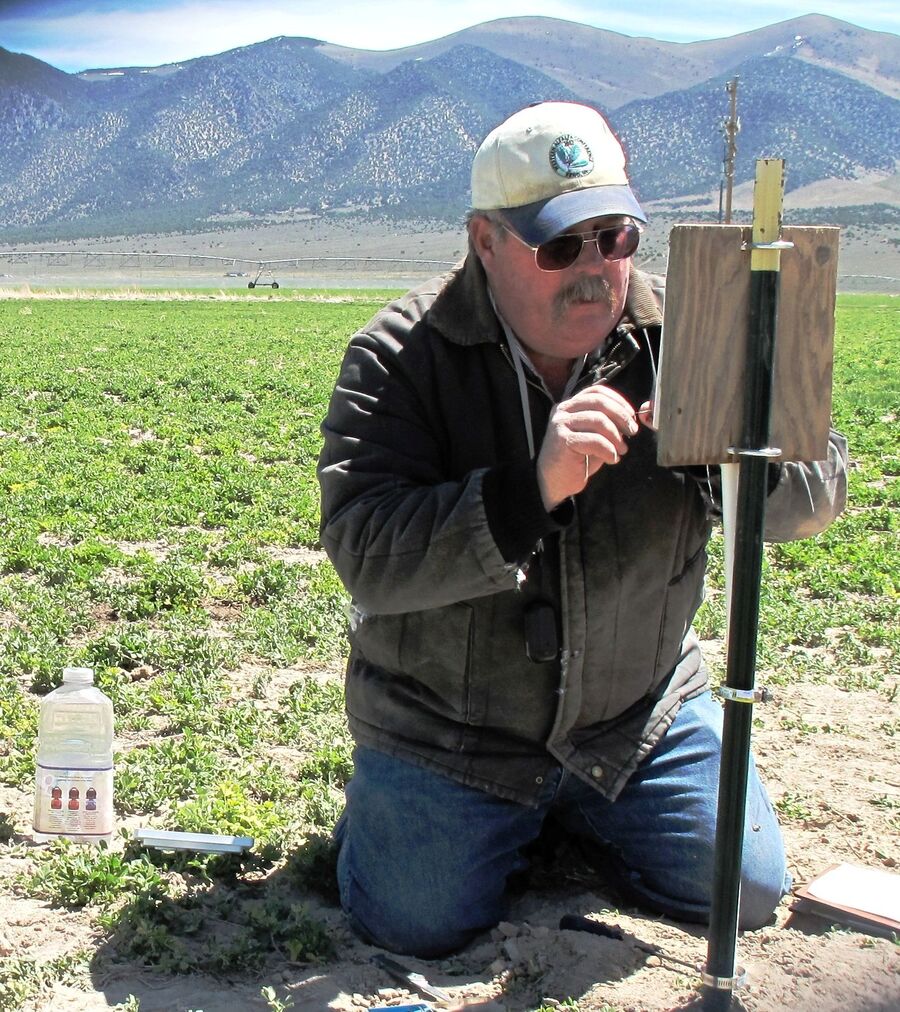
To help meet the requirements of the plan, the research and demonstration projects by Gary McCuin, Extension agriculture and natural resource educator in Eureka County, and Howard Neibling, irrigation specialist with University of Idaho, in collaboration with Marty Plaskett, a local farmer and irrigation equipment dealer, initiated a shift in Diamond Valley to transition from the use of traditional mid-level irrigation sprinklers (MESA) to low-elevation spray application (LESA) systems, with sprayers closer to the ground and spaced closer together. This change provides for more efficient water use by reducing the amount of water lost before it reaches the ground.
The conversion increased irrigation efficiency from 60% to 70% to over 80% efficiency, resulting in substantial water savings. Now McCuin is working to encourage adoption of soil moisture measurement and analysis technology, as well as implementation of the six soil health principles and sustainable farming practices, which will increase water retention.
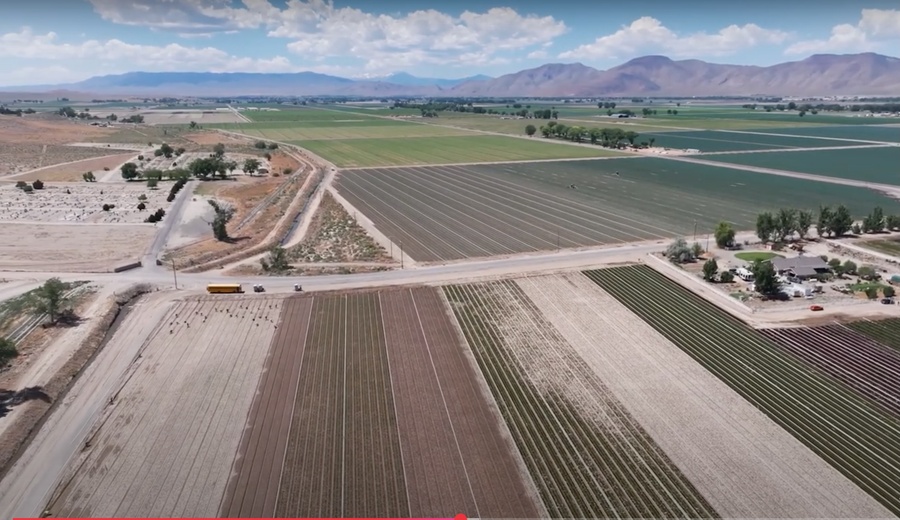
McCuin said that in the long run, the requirements of the state-mandated plan to reduce water usage, along with changes in crop production and economics, provide motivation for improved irrigation and improved farming practices. A shift toward improving soil health, increasing soil biology and organic matter, and improving soil aggregation to capture and retain water will increase the potential for long-term farm sustainability. But, he added, the process takes time, patience, and more importantly, a paradigm shift from historic cultural practices.
“It’s never as easy as people sometimes suggest it is,” he said.
Finding collaborative approaches
A shifting climate raises increasingly challenging questions about management of water in Nevada and across the West. How will water be allocated among the competing needs of cities, farms, industries, Native American tribes and the environment when there isn’t enough water to go around?
A multidisciplinary team at the University is working closely with water users to understand present allocation institutions and how they could be strengthened to help communities adapt to changing water availability.
A key early finding: People in local communities are eager to work with scientists to develop collaborative approaches, said Loretta Singletary, a professor and interdisciplinary outreach liaison in Extension and the University’s Department of Economics in the College of Business.
“By engaging stakeholders in its production, scientific research becomes more transparent and legitimate to stakeholders,” a team led by Singletary wrote in research published in Socio-Ecological Practice Research. “In contributing to research, stakeholders acquire a sense of ownership of the research processes and outcomes.”
Those findings now are blossoming in a project dubbed SNOWPACS, an acronym of “Synthesizing KNowledge to Optimize Water Policy for Agriculture under Changing Snowpack.” The initiative is led by Michael Taylor, a state specialist with Extension and associate professor of economics, and was funded by a $4.9 million grant from the USDA National Institute of Food and Agriculture.
In Nevada’s Walker River Basin and Colorado’s South Platte River Basin, SNOWPACS is working with local communities to prepare for changing water supplies as it brings together agricultural producers, hydrological scientists, economists and the water-allocation institutions that establish the rules for water use in the West.
Taylor said the work is urgent and complex as communities wrestle with the complexities of wide swings in annual snowpack as well as ever-earlier snow melts that often don’t bring water to users when they need it most. The team has produced a video, “Water Markets of the Walker River Basin,” explaining the issues and their work to help address them.
SNOWPACS is funded by the USDA’s National Institute for Food and Agriculture.
Training skilled farm professionals
Equipping agricultural producers with water-efficiency strategies is key to sustainable farming in Nevada. The University’s Desert Farming Initiative incorporates innovative practices such as precision irrigation into training programs for University students and aspiring farmers within the context of its working fruit and vegetable farm.
In 2025, the Desert Farming Initiative trained two apprentices and six students, said the Initiative’s director, Jill Moe. The program, part of the Experiment Station unit, also hosts a steady stream of agricultural industry support programs, tours and University class visits that include discussion on equipment and technology for small farm irrigation management.
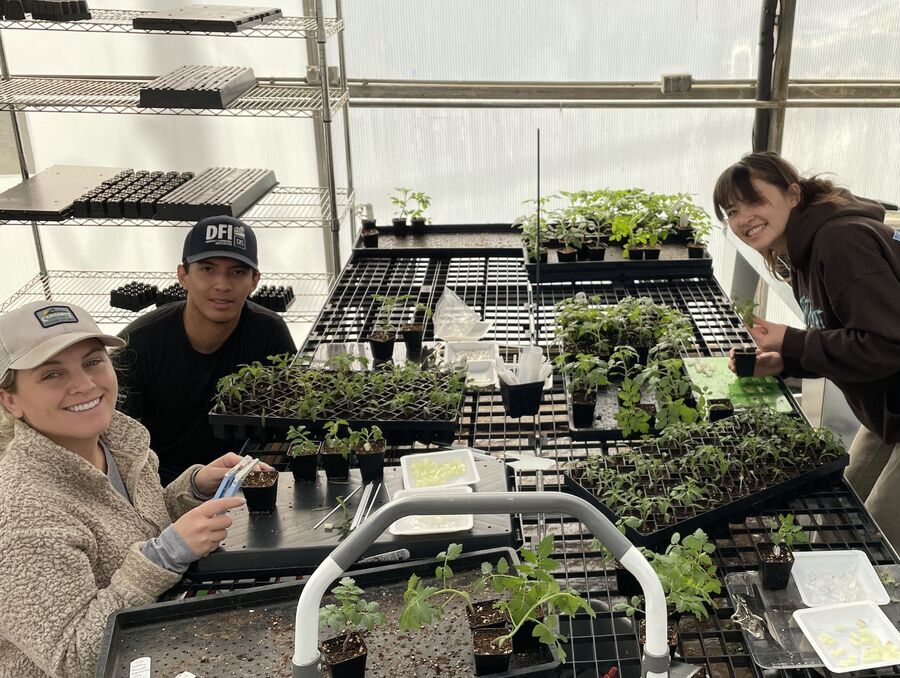
Hands-on work in the setting of a commercial farm has proven to be a powerful learning tool.
“At DFI, we use drip tape, which has a high water-use-efficiency rate, paired with an irrigation schedule that is less frequent,” said Vanessa Mackessy, a student who worked at the farm last year. “This allows for the water applied to infiltrate and reach the rooting zone, reducing the evapotranspiration rate and keeping moisture deeper within the soil profile. Work at the Desert Farming Initiative has been an amazing experience allowing me to learn and grow alongside the crops we plant. The sense of pride and accomplishment is indescribable.”
Experienced farmers and ranchers, meanwhile, participate in industry programs to meet the challenges of farming in an arid, windy region. These programs are informed by research conducted at the Desert Farming Initiative.
“Nevada presents multiple obstacles for the fruit and vegetable grower,” said Rob Holley of Holley Family Farms of Dayton. “The relative lack of precipitation, the harsh climate and limited irrigation water supplies pose particular challenges. The techniques employed at DFI offer solutions and alternatives for experienced farmers to moderate the effects of our climate and more efficiently and effectively utilize their available irrigation supply. These practices result in more food produced from less total space, with the same, or possibly even less water applied.”
Although the Desert Farming Initiative’s purpose is to provide training and conduct research that answers pressing questions from producers, its farm at the Valley Road Field Lab also helps feed the region. Last year, it produced 10,400 pounds of produce, such as tomatoes, carrots and melons, that primarily supported food pantries on the University campus and in Reno. All farm revenue is directed right back into training and industry-support programs.
Improving landscaping efficiency
While the Desert Farming Initiative and other University programs seek to help agricultural producers use water more efficiently, the University also conducts numerous programs to help landscape professionals and homeowners use water resources wisely. Residential landscaping, with crops of turf, trees and bushes at homes, parks and golf courses, accounts for 70% to 75% of water use in Nevada, is another focus of the University’s Extension unit.
Some 103 landscapers and nursery professionals statewide have been certified under QWEL – that’s shorthand for “Qualified Water Efficient Landscaper” – since the three-day program was launched by Extension in Nevada in 2018.
“Local landscapers and other green-industry professionals often lack basic information on irrigation efficiency and landscape sustainability,” explained Heidi Kratsch, a professor and sustainable horticulture specialist with Extension. “Our program provides the critical information needed to make sure the water we apply to our landscapes is used efficiently.”
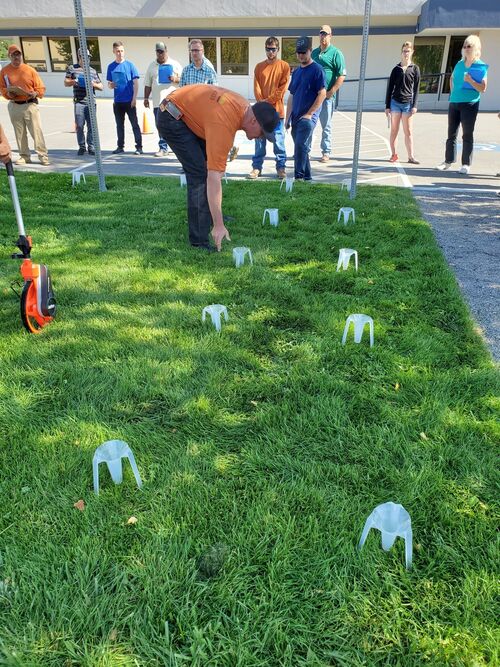
Water-efficient turf management is an important topic, too, in the Green Industry Continuing Education series offered by Extension to entry-levels workers in the industry. Protection of water from pollutants, meanwhile, is also important in managing our water resources, and integrated pest-management courses coordinated by Extension appear to be making a difference.
Pesticide safety education courses, for example, drew 164 participants during sessions this spring and last fall. Carrie Jensen, the coordinator of pesticide safety education and urban integrated pest-management programs, said pesticide professionals appear to be putting its lessons into practice.
“Over 10 years of our programming, studies show a significant decrease in pesticide residues in Nevada waterways, despite population growth,” Jensen said.
That’s the kind of impact the University is looking for. Whether it’s improving water quality in our rivers, finding ways to use new technology to irrigate more efficiently, or training the next generation of farmers in the classroom and in the field, the far-flung initiatives share a common goal: a commitment to preparing Nevada and other arid regions to adapt to changing conditions that require more efficient management of our water resources.
